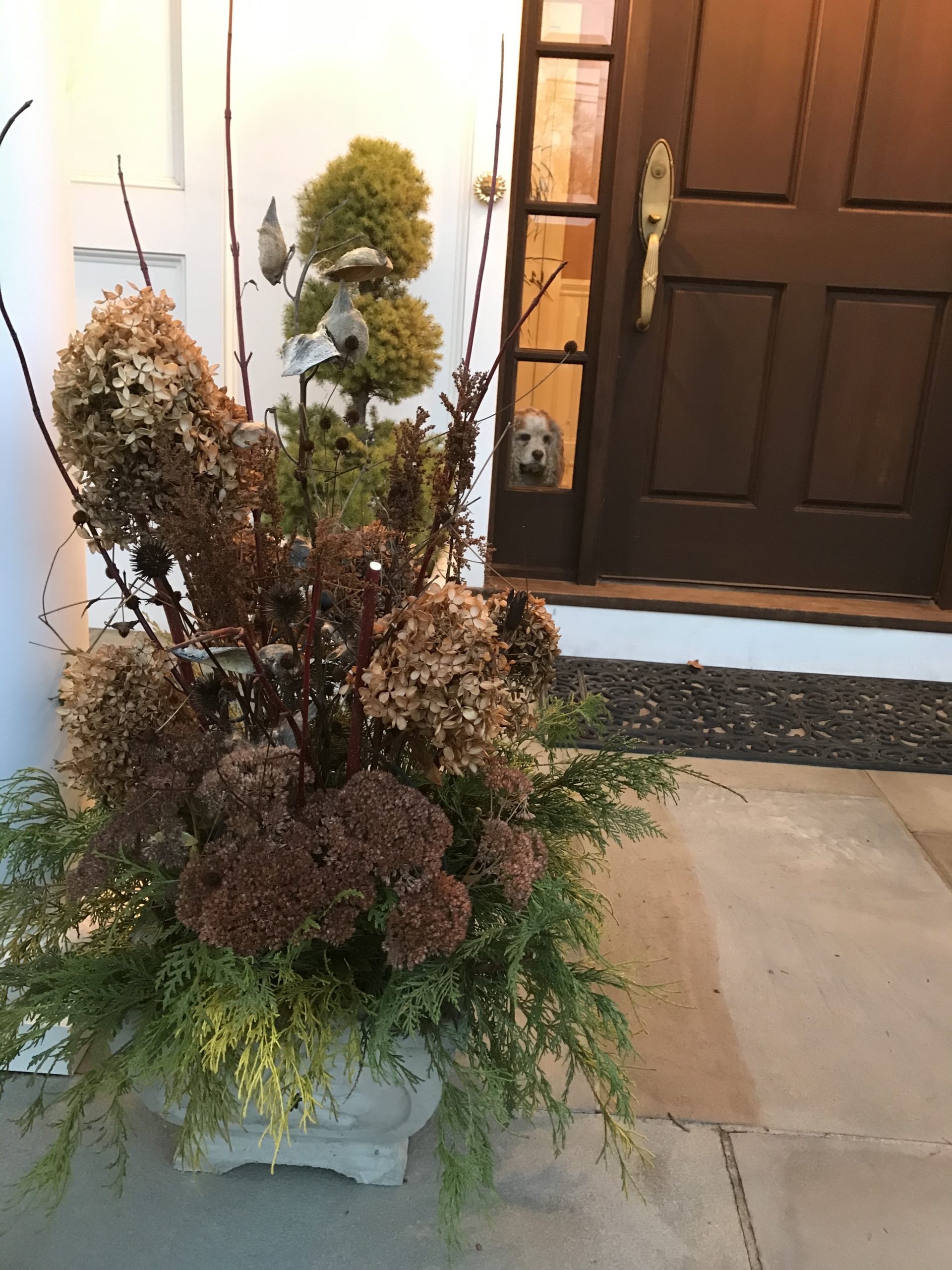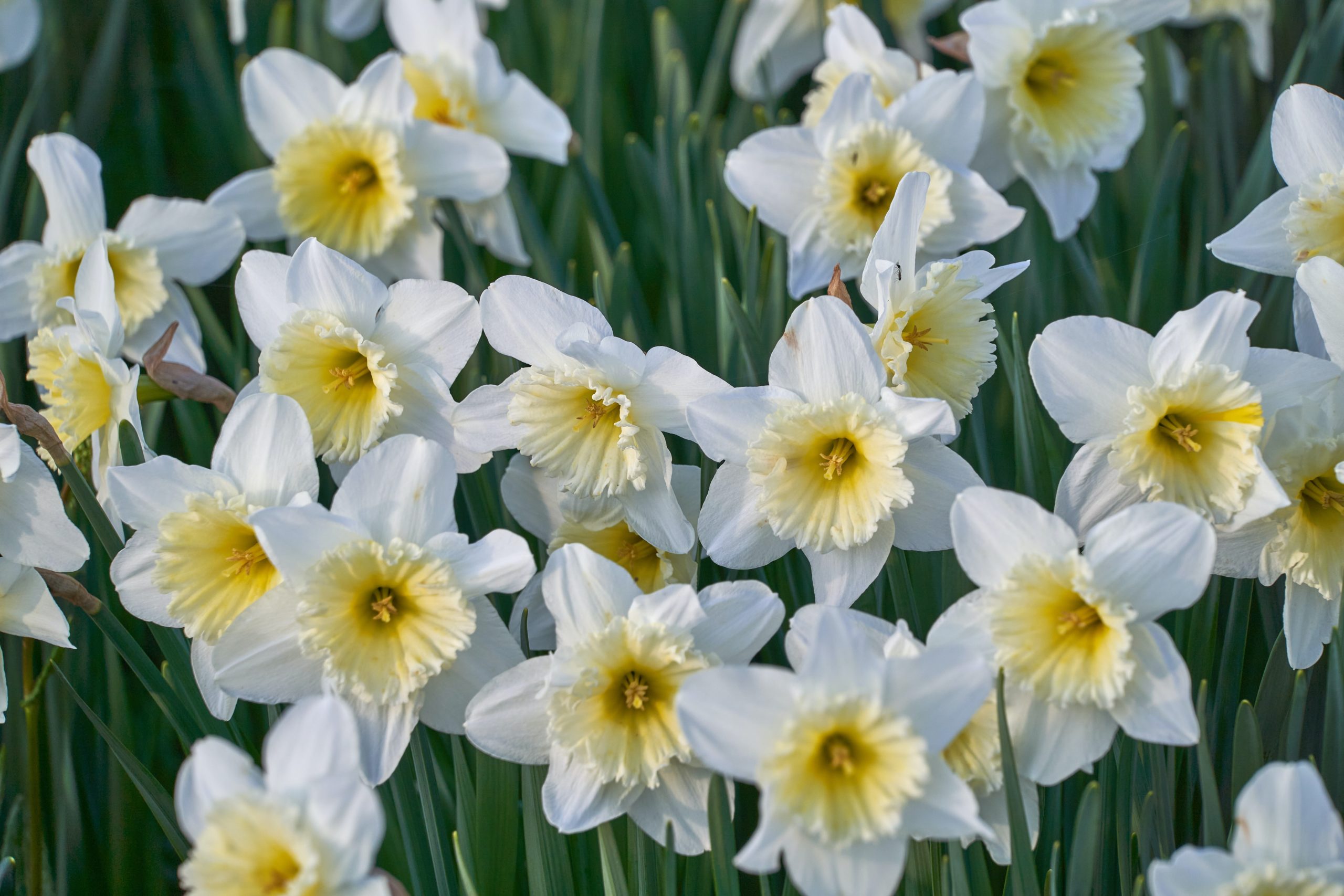October: What to do in the Garden by Nancy Greeley
Fall is here and it’s time to finish up all our outdoor garden tasks before we settle in for the winter.
As always, as things look bad and scraggly, it’s time to cut them back. But, be patient, many will dry nicely and be quite attractive. If you have perennials and shrubs waiting to be planted it’s time to get to it. It’s also time to start collecting seeds to save for next spring or to start this fall. Our Conservation Committee will once again be offering seed collection and native seed planting educational opportunities so be on the lookout.
As you cut back your perennials, keep an eye out for seed pods that you may be able to harvest and for dried, dead plants & branches that will add beautiful texture and interest to your outdoor (or indoor) holiday pots. I suggest waiting to cut those until you’re ready to design your outdoor pots. It’s amazing how beautiful varied greens, dried sedum, hydrangeas and other miscellaneous dried stems & seed pods can combine to make a stunning, decorative and festive outdoor design. Take a look at one of my outdoor pots from last December, all made from items in my garden, and a few from my friend Sandi’s amazing garden! Many of these dried stalks add lovely dimension and interest to your winter garden as well. As you’re cleaning up keep that in mind. Just think of snow and frost on dried plants and grasses in winter. They glisten and sway and add so much beauty. Again, many beneficial insects and critters love them, too.

As you continue with your cleanup, remember that plant debris and fallen leaves can provide shelter for eggs, larvae and adults of an enormous number of overwintering butterflies and beneficial insects. You may want to leave some cozy spots for these to shelter. However, if a plant is diseased or invasive, dispose of it. Your garden’s fallen leaves and debris can also suppress weeds, help retain moisture and return nutrients to the soil. So, you may want to let it decompose over the winter and consider cleaning out what’s left next spring once the nights have warmed to 50 degrees or so. It may not look as tidy and fresh, but it’s healthy for our environment.
At our September 28th garden tour of Sandi Blaze’s stunning gardens, we saw and learned how shredding your fallen, dried leaves and spreading them as organic mulch in your garden can be beneficial, beautiful and economical. It’s a lot of work, but according to Sandi her recent purchase of an industrial vacuum shredder makes the work manageable. Sandi shared with us that by using leaf mulch she has very few weeds and doesn’t have to rely on fertilizing to keep her gorgeous gardens looking their best.
As you continue your clean-up be wary of weeds with seeds. While we likely all try to deadhead all prolific seeders before they set seed, we often fail to do so. As we pull up the plants and scatter the weed seeds, we’re just sowing more weeds. So, when we see those fuzzy little beauties flying through the air beware. I recently read that, according to environmental landscape designer Larry Weaner, the thing to do is to cut weeds at the base rather than pulling them. By cutting them at the base you’re not leaving openings for seeds or invasive plants or bringing undesirable seeds already in the soil (the seedbank) up into the light, where they will germinate. He says that the base of the weeds, as well as spent annuals will decompose.
Bulbs: It’s time right now to decide where to plant the spring blooming bulbs that you ordered from our Bulb Sale so you’ll be ready to start planting when they are delivered later in October. As I’ve suggested before, it’s a great idea to take photos now and throughout the seasons to be sure you know the best spots for planting. If you can, keep a diagram of your garden and update it with plants, bloom times, etc. so you can continue to enhance your gardens with a long term plan in mind.

Enjoy these autumn months in your garden!
Nancy (nagreeley@gmail.com)


